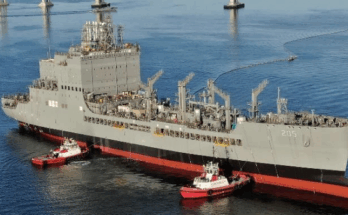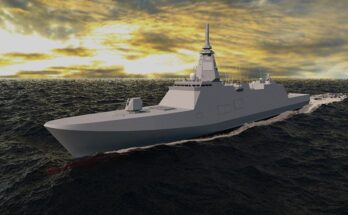by Dan Darling, International Military Markets Analyst, Forecast International.
Faced with a declining submarine inventory, the Indian Navy is hoping to augment its current Project 75 order for six French-designed Scorpene diesel-electric attack submarines. The subs are being built by Mumbai-based Mazagon Docks under license, and with technology transfer provided by DCNS. The Navy is seeking three additional Scorpene subs, and a tender for the requirement is expected to be issued in 2016.
The tender for the supplementary buy will parallel the Indian Navy’s Project 75I program involving a new six-ship class of nuclear-powered attack submarines (SSNs), in an effort to bolster the Navy’s sagging submarine capability. Meanwhile, the tender for Project 75I will be put forth via India’s “Buy and Make (India)” procurement category, meaning any foreign vendor involved in the deal must provide technology transfer to a domestic Indian shipyard.
These steps are crucial for the Indian Navy, which as of 1986 had an operational fleet of 21 submarines but now has only 13 aging diesel-electric subs, including nine Russian-designed Kilo-class and four aging German-built Type 209 models. Of these, only about four are operationally functional, as the remainder are in port for maintenance or upgrade work.
In addition, the Indian Navy also has one nuclear-powered submarine: a Russian-leased Project 971 Akula-class SSN rechristened the INS Chakra upon her commissioning into Indian naval service on April 4, 2012. This submarine is being leased under a 10-year deal that expires in 2022 and is being used to train Indian Navy crew members on SSN operations.
By comparison, India’s regional rival China has 51 conventional and five nuclear submarines. Additionally, another five or six Project 094 Jin-class nuclear-powered submarines armed with nuclear-tipped missiles (SSBNs) are on the way.
For its part, India has one SSBN – INS Arihant. The Arihant is currently undergoing sea trials in Vizag and is slated to be commissioned in 2016. The Arihant represents the lead ship in what ultimately will be the five-unit Arihant-class SSBN fleet being constructed through 2027. Two more Arihant-class SSBNs are in an advanced stage of construction.
The need to restock the Indian Navy with a competitive submarine arm has become increasingly pressing, thus the push to supplement the Scorpene order.
Pressure began building for the Defense Ministry to step up its efforts on August 14, 2013, when one of the Russian-built Kilo submarines – INS Sindhurakshak – suffered an explosive fire, rendering the submersible unrecoverable. But with financial limitations and a general election hindering any forward movement, the submarine void remained unfilled. The Indian Navy proposed in August 2014 that the Defense Ministry move on a two-unit purchase of Russian-built Amur-class submarines as a means of rapidly restocking the submersible fleet, but that request went nowhere, as the newly elected conservative NDA government preferred to focus on localized production projects such as Project 75I.
Meanwhile, the original Project 75 buy of six Scorpenes has suffered continued delays, and the initial sub, contractually scheduled for delivery in December 2012, will not arrive until December 2016 – thus the need to add punch to an already-underwhelming operational submarine force. With the six Project 75 submarines slated for delivery by 2022 (plus five Arihant-class SSBNs), the launch of the six-unit Project 75I procurement pending, and the three-sub top-up to the original Scorpene purchase now set to go forward, the hope for the Indian Navy is that its lackluster operational submarine capability will no longer be a deficiency by 2027, when the service’s maritime capability plan is expected to come to fruition.
For 50 years, Forecast International intelligence reports have been the aerospace and defense industry standard for accurate research, analysis, and projections. Our experienced analysts compile, evaluate, and present accurate data for decision makers. FI's market research reports offer concise analysis of individual programs and identify market opportunities. Each report includes a program overview, detailed statistics, recent developments and a competitive analysis, culminating in production forecasts spanning 10 or 15 years. Let our market intelligence reports be a key part of reducing uncertainties and mastering your specific market and its growth potential. Find out more at www.forecastinternational.com




